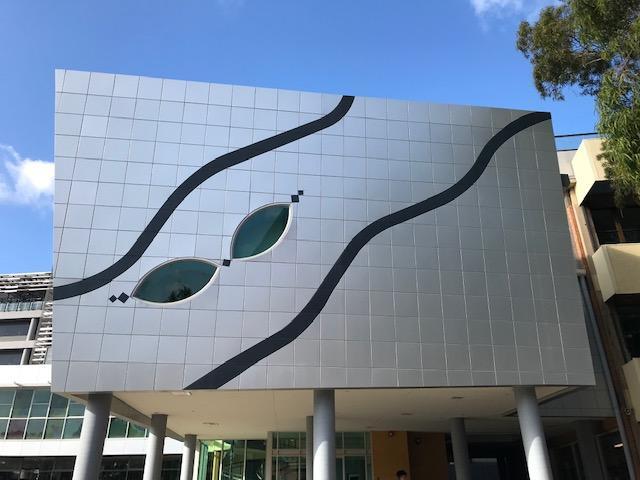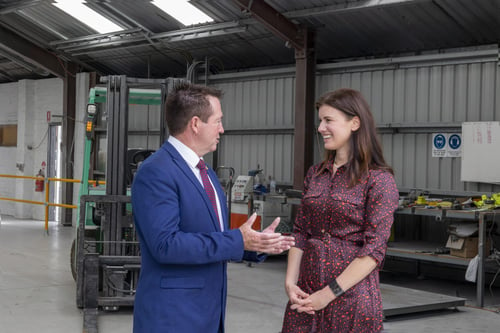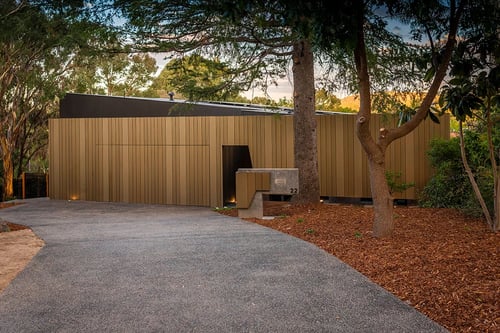When designing a building, no architect, builder or installer wants to be faced with the prospect of a rusted metal exterior facade. So, does aluminium cladding rust? The quick answer is no, making aluminium stand out over steel and iron cladding options, which do rust. Rather than degrading due to oxidisation, aluminium forms a hard layer which keeps the metal beneath from being damaged. However, aluminium siding can corrode if exposed to high levels of pH or galvanisation, so taking further corrosion prevention measures can help ensure your cladding will last, even in tougher conditions. Adding a specially designed corrosion-resistant coating can also enhance protection and create siding that can withstand the elements over longer periods of time. Discover how aluminium cladding stands up to deterioration and explore metal corrosion prevention tips here.
Will Aluminium Cladding Rust?
Pure aluminium does not rust – but it will react with oxygen when exposed to it. When this occurs, a thin aluminium oxide coating is formed, which chemically bonds to the surface of the aluminium, resulting in a hard, durable layer. This aluminium oxide layer protects the metal beneath from further degradation, and will renew itself if scratched off, making aluminium a safe choice when it comes to corrosion protection. To add further protection, a protective coating or finish can be applied to the aluminium, reducing exposure of the metal beneath to the elements.
Vitradual, the prefinished aluminium cladding system from Fairview, is an example of the superiority of aluminium as a corrosion-resistant cladding choice. Consisting of a 3mm panel of solid aluminium, Vitradual makes the most of aluminium’s natural corrosion-resistant properties, combined with an extra layer of protection in Fairview’s leading Kynar 500® PVDF resin-based coating or finish.
Why Does Aluminium Cladding Corrode?
While aluminium cladding cannot rust, it can corrode. While the aluminium oxide layer that forms on the surface offers protection against corrosion, this can be broken down, exposing the metal beneath – and if the coating is broken down faster than it can re-oxidise, the aluminium beneath is at risk of degradation.
Galvanic corrosion is the most common form of corrosion of aluminium – galvanisation occurs when different metals are positioned together and exposed to an electrically conductive liquid. A reaction takes place whereby one metal’s electrons transfer to the other, weakening it. Aluminium is always the metal weakened when galvanisation occurs, resulting in corrosion of the siding.
Corrosion of aluminium is also a risk when the metal is exposed to chemicals such as sulphides (found in the atmosphere in highly polluted areas) or chlorides (such as salt or acidic salt spray in coastal areas). These chemicals can attack the aluminium oxide layer and degrade the aluminium beneath, impacting your cladding.
To protect against these forms of corrosion, a protective coating can be applied to aluminium cladding to enhance its corrosion resistance and prevent the pure aluminium from being attacked by chemicals or galvanisation. Paint, powder coated, and anodised finishes are all popular, while advanced coil coat PVDF coatings can also provide superior corrosion resistance.
Click here to read more about Vitradual, the prefinished aluminium cladding system that prevents corrosion.
Is Aluminium Cladding Better at Resisting Rust or Corrosion Than Other Metal Cladding?
All metals oxidise – but unlike steel, iron and other metals, aluminium does not rust. To use steel cladding effectively, it must be galvanised or coated in chromium oxide to add extra protection. When steel rusts, it forms a flaky, reddish layer which degrades its overall appearance. This can be used as a design statement (known as Corten Steel) – however, this can leach over time.
Instead of degrading or discolouring, the hard oxide layer formed during the aluminium oxidisation process acts as a natural barrier to corrosion, making aluminium a superior cladding product where corrosion resistance is concerned.
Coatings add an extra layer of protection against chemicals, and can keep the aluminium beneath dry, preventing any electrically conductive liquid from coming into contact with the aluminium and triggering the galvanisation process. In addition, coatings can also add colour and texture for an aesthetically appealing design.
Wet paint finishes and powder coatings are electrically insulating, minimising the risk of galvanisation. Anodising is another popular finish for aluminium cladding – this is a process where an even tougher aluminium oxide layer is deliberately created on the surface of the metal, keeping the aluminium beneath from being exposed to contaminants. Pre-painted PVDF coil coat finishes can also provide durability and colour integrity, with a continuous finish preventing exposure to the elements at gaps in the coating.
Vitradual offers a highly corrosion resistant aluminium cladding solution. As well as the natural aluminium oxide builders can expect from a solid aluminium cladding product, Vitradual also features Fairview’s exclusive Kynar 500® PVDF finish. Made from high-durability fluoropolymer (FEVE) paints, the premium finish boasts resistance to weather and industrial pollution, keeping the aluminium beneath safe from sulphides, chlorides and other elements that could lead to corrosion. The FEVE pre-painted PVDF style of finish was chosen for its superior quality, as well as a coating that is ongoing with no exposed joints or edges for extra weatherproofing.
For premium durability, the Kynar 500® coating has undergone over 50 years of South Florida Exposure testing, proving its ability to last even in severe conditions. Combining this highly durable finish with 3000 series aluminium – a popular finish for façades – results in an extra hardwearing product. This 3000 alloy, which is less rigid than other corrosion-resistant alloys on the market, is less susceptible to the coating cracking and exposing the metal beneath, even when bent and fabricated into cladding profiles. PVDF on 3000 series aluminium has undergone extensive testing, including bend and scratch tests, resulting in lower levels of blistering and discoloration than other types of finished aluminium.
In addition to these effective corrosion prevention properties, the Kynar 500® finish offers unlimited colours, making Vitradual not only a durable aluminium panel that eliminates issues associated with corrosion, but the most customisable aluminium cladding on the market, able to achieve any design brief.
Kynar 500® is a registered trademark belonging to Arkema Inc.
Summary
Aluminium cladding offers an advantage over other metal cladding types – it will not rust, and it is more resistant to corrosion than its counterparts. Although extremes such as chemicals and galvanisation can attack the natural aluminium oxide layer and degrade the metal, with the right finish, aluminium cladding can become a highly corrosion resistant option, which can last as a siding option for long-term durable façades.
Vitradual, the solid aluminium cladding panel from façade experts Fairview, has a specialised PVDF finish designed to protect against chemical and galvanic corrosion.
Click here to read more about the aluminium cladding solution, Vitradual.



